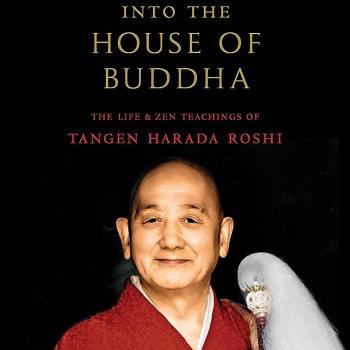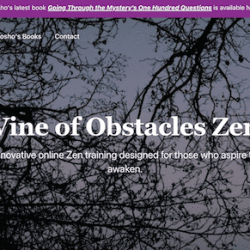 Kaz Tanahashi’s new book is a treasure trove of Heart Sutra material, delightfully diverse and quietly quirky. I read the book enthusiastically in one day – an unusual thing for me (I usually like to go slow with dharma books) – and was energized by the experience.
Kaz Tanahashi’s new book is a treasure trove of Heart Sutra material, delightfully diverse and quietly quirky. I read the book enthusiastically in one day – an unusual thing for me (I usually like to go slow with dharma books) – and was energized by the experience.
Kaz is an unassuming man who’s long been an integral member of the Zen scene in the West, widely acclaimed for his vibrant calligraphy and wide-ranging translations including Dogen’s Shobogenzo, the Tao De Ching, a delightful book on Ryokan, and a personal favorite, A Flock of Fools: Ancient Buddhist Tales of Wisdom and Laughter from the One Hundred Parable Sutra. Kaz has also had a long career as a peacemaking, creative, social activist. Kaz claims to be lazy and yet has accomplished more than >99% of the humans on the planet. So I came to the book expecting a deep, varied, nuanced and unconventional book and that’s just what this is. Here’s a partial list of what’s included:
- a new translation of the sutra (in collaboration with Roshi Joan Halifax)
- a short summary of the meaning of the sutra
- tales from Kaz’s travels to research the sutra
- folk lore about the effects of the sutra as talisman (one of it’s primary uses until modern times)
- the story of Xuanzang, the great 7th Century translator
- an extended analysis of Jan Nattier’s controversial theory that the Heart Sutra was created in China and back-translated into Sanskrit, probably by Xuanzang (Kaz deftly wades into the controversy on Nattier’s side, I think, while gentling the argument)
- a chapter on the various forms of script that have been used for writing the sutra (with lovely illustrations – throughout, really)
- a 67-page word-by-word analysis that employs sixteen different translations from six languages (“Terms and Concepts”)
To give you a bit of the flavor of the text, here’s an excerpt with Kaz’s summary of the origin of the Heart Sutra: “Perhaps during the process of meditation, this person [the compiler] envisioned the merging of three major Mahayana elements – the figure of Avalokiteshvara; a portion of a Prajna Paramita Sutra; and a mantra that already existed. It was brilliant notion, as these three elements represented the main pillars of Buddhism in China at that time…. We may thus see the Heart Sutra as a vehicle made of Indian parts, assembled in China.”
I expect that Kaz’s Heart Sutra book will be an essential resource for anybody studying the text deeply and certainly for those teaching it. I know that I’ll be referring to the “Terms and Concepts” section frequently in the upcoming course on the Heart Sutra here in Portland, ME, and I’ll be adding it to the resource list for the Heart Sutra course for the Vine of Obstacles: Online Support for Zen Training.











